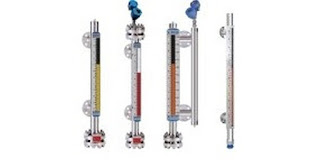 |
| Pressure switch in an explosion-proof housing. (United Electric) |
In heavy industry, pressure switches are used in virtually every power plant, refinery, chemical plant, paper mill, steel mill, or other manufacturing plant that blends ingredients.
Pressure switches are simple devices. They can be broken down to their major parts: a pressure port or connection; a sensor that moves in relationship to changing pressures; an electrical or pneumatic switch that opens or closes upon movement; and finally a housing that protect the internals of the pressure switch from the ambient conditions.
 |
| Differential pressure switch. (United Electric) |
One of the earliest and most common designs of pressure switch was the bourdon tube pressure sensor accompanied by a mercury switch. A mercury switch is a position sensitive glass bulb containing mercury that flows over, or away from, the electrical contacts. When pressure is applied, the bourdon tube attempts to straighten, and moves enough to slightly tilt the mercury switch. Many of these kind of pressure switches were sold on steam boilers, and while they became a de facto standard, they were sensitive to vibration and breakage of the mercury bulb.
 |
| NO vs. NC electrical switch contacts. |
One of the criteria of any pressure switch is the deadband or (reset pressure differential). This setting determines the amount of pressure change required to reset the switch to its normal state after it has tripped. The “differential” pressure of a pressure switch should not to be confused with differential pressure switch, which actually measures the difference in pressure between two separate pressure ports.
When selecting pressure switches you must consider the electrical requirements (volts, amps, AC or DC), the area classification (hazardous, non-hazardous, general purpose, water-tight), pressure sensing range, body materials that will be exposed to ambient contaminants, and wetted materials (parts that are exposed to the process media).
It's always a good idea to discuss your application with an expert before specifying or installing a pressure switch. You'll end up saving time and money, and ensure long, safe operation.
For more information on pressure switches, contact Miller Energy by visiting https://millerenergy.com or by calling one of these numbers: In New Jersey 908-755-6700. In Pennsylvania 610-363-6200.

















